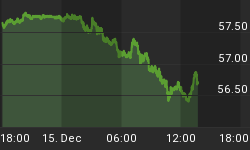Last week I stated: "The current market environment is looking more and more like quarter 4, 2010, which was heralded by QE2. This time the printing press is with the European Central Bank, but the Fed is doing a great job jawboning the market higher, and they are ready and willing to expand their balance sheet even more. Like quarter 4, 2010, both the Dollar and Treasury bonds have peaked out. So what's left? It's equities and commodities. It is in these kinds of extremes of bullish sentiment that market melt ups happen. For now, we need to respect this dynamic. The bulls have the ball in their court and are on the cusp of turning this recent low volume price move into a multi-month barn burner."
Yes, sentiment is bullish, but remember "it takes bulls to make a bull market". It is just one of those things. Very little matters -- volume, sentiment, the news, valuations, or underlying economic data. The only thing that is necessary to know is that there is a buyer (i.e., central bank) out there with unlimited resources that has distorted markets. There remains a disconnect from the economic data, the stock market, and what people see and feel on the ground. It is a liquidity induced rally similar to Q4, 2010/ Q1/2011. In this environment, it will be best to embrace the bullishness than fight against it.
The "Dumb Money" indicator (see figure 1) looks for extremes in the data from 4 different groups of investors who historically have been wrong on the market: 1) Investors Intelligence; 2) MarketVane; 3) American Association of Individual Investors; and 4) the put call ratio. This indicator shows extreme bullishness.
Figure 1. "Dumb Money"/ weekly
Figure 2 is a weekly chart of the SP500 with the InsiderScore "entire market" value in the lower panel. From the InsiderScore weekly report: " Insider trading volume began to increase towards the end of the most recent tracking week as some trading windows opened in the wake of the first big round of earnings announcements. Volume, however, is still too light for us to get a macro call and there's been no early indication this quarter from insiders as a group as to their sentiment."
Figure 2. InsiderScore "Entire Market" value/ weekly
Figure 3 is a weekly chart of the SP500. The indicator in the lower panel measures all the assets in the Rydex bullish oriented equity funds divided by the sum of assets in the bullish oriented equity funds plus the assets in the bearish oriented equity funds. When the indicator is green, the value is low and there is fear in the market; this is where market bottoms are forged. When the indicator is red, there is complacency in the market. There are too many bulls and this is when market advances stall. Currently, the value of the indicator is 67.66%. Values less than 50% are associated with market bottoms. Values greater than 58% are associated with market tops.
Figure 3. Rydex Total Bull v. Total Bear/ weekly
TheTechnicalTake offers a FREE e-newsletter: HERE
















